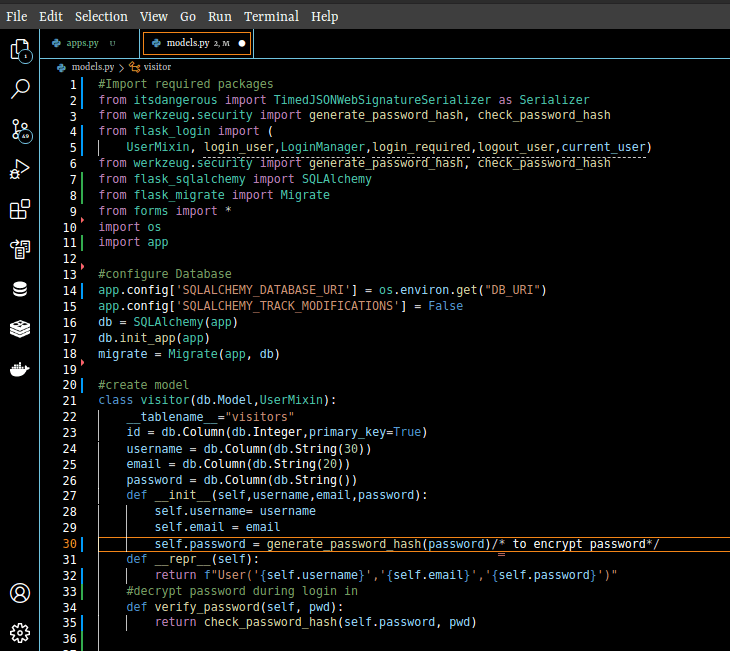This content originally appeared on DEV Community and was authored by Tito
Introduction
This article is a continuation of our Previous Post where we tackled setting up working directory, working environment , installing flask and run a flask app.
In this article we will focus on creating models , migrations and testing database
Prerequisite
- python 3+ installed
- Flask Installed; A working flask app
- PostgreSQL optional; work with DBMS of your choice
Before you start, create a model.py file in project folder and install ,import the following packages:
- flask-login
- flask-sqlalchemy
- flask-migrate
- itsdangerous
 On the database configuration, it is advisable to hide the db details using environment variables.
On the database configuration, it is advisable to hide the db details using environment variables.
After creating our model and ensuring that the DBMS of your choice is working, carry out a migration:
(env) tito@tito-HP-2000-Notebook-PC:~/Desktop/Milestone/Mile_Proj$ flask db init
(env) tito@tito-HP-2000-Notebook-PC:~/Desktop/Milestone/Mile_Proj$ flask db migrate
The migrations will automatically create tables in your Database.
Thank you for following .
The next article , I will handle forms for collecting data.
------------------------------------ NEXT ARTICLE------------------------------------
This content originally appeared on DEV Community and was authored by Tito
Tito | Sciencx (2021-08-26T14:35:29+00:00) Flask[Part 2]: Setting up Database. Retrieved from https://www.scien.cx/2021/08/26/flaskpart-2-setting-up-database/
Please log in to upload a file.
There are no updates yet.
Click the Upload button above to add an update.

